Early in 2020, WHOOP introduced the WHOOP Journal, an exciting feature that helps you understand how your lifestyle and behavior influence your sleep performance and recovery.
WHOOP Journal utilizes a series of advanced algorithms to analyze information you provide about things like your workouts and diet, and draws correlations between those factors and changes in your sleep and recovery performance.
As a result, you can use that information to make changes to your behavior in an attempt to hack your sleep, physical performance and recovery.
What Is WHOOP?
The WHOOP strap is an advanced fitness and sleep tracker that unlocks the secrets your body is trying to tell you. WHOOP’s features go far beyond those offered by other fitness and sleep trackers, such as calorie counting and heart rate measurement.
Instead, WHOOP analyzes and interprets the data it collects from its advanced sensors, which measure your biometrics 100 times per second, and gives you actionable information that you can use to improve your sleep and overall performance.
To learn more about WHOOP and why I’ve been wearing it for years, check out my in-depth WHOOP review and my WHOOP vs Apple Watch comparison article.
The Old WHOOP Journal
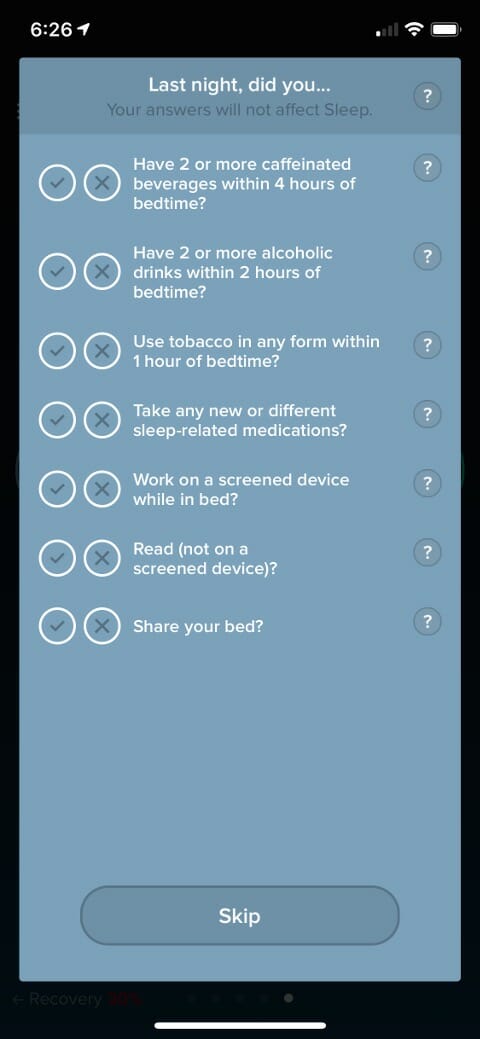
Before the introduction of the new WHOOP Journal feature, the WHOOP app featured a simple questionnaire that would ask a handful of questions every morning.
These questions included things like whether you felt sick when you woke up, whether you had more than two alcoholic drinks within two hours of the previous bedtime, whether you read a printed book or magazine before going to bed, whether you read on a non-screen device, or if you felt stressed before you fell asleep.
Those questions weren’t incredibly specific, but based on the answers that I provided, the WHOOP algorithm could identify trends and give me feedback I could use to optimize my sleep.
For example, if WHOOP detected that I was getting less slow-wave sleep (deep sleep) after having consumed two or more alcoholic drinks within two hours of bedtime, the app would tell me.
Of course, I already knew that consuming alcohol before bedtime negatively impacted my sleep. But with WHOOP, I was able to actually see the extent of the impact, measured in how many fewer minutes I spent in slow-wave sleep.
The problem with WHOOP’s original implementation of that questionnaire was that it lacked the necessary details and specifics to be truly meaningful.
For example, what if I had only consumed one drink before bedtime instead of two? Or what if I had two drinks, but more than two hours before going to bed?
That type of detailed response wasn’t possible until WHOOP launched the Journal.
The New WHOOP Journal

The new WHOOP Journal, which was introduced in March 2020, fixed that shortcoming.
WHOOP decided to massively increase the trackable behavioral parameters, from four or five to over 100. At the time of this writing, you can track different behaviors split into the following categories:
- Circadian Health
- Lifestyle
- Medication
- Mental Health
- Nutrition
- Recovery
- Reproductive Health
- Sleep
- Status
- Supplements
Besides the increase in the number of trackable individual behaviors, you can now also provide detailed feedback about each behavior.
For example, for the question about my consumption of alcoholic drinks, I can tell WHOOP both exactly how many drinks I had and when I had the last one.
Being able to provide such granular feedback about my lifestyle and behavior is a game-changer because it enables WHOOP to provide much more precise recommendations and insights into how a specific behavior impacts my performance, recovery and sleep.
Of course, it’ll take a few weeks for WHOOP to collect sufficient sampling data before it can give me any meaningful insights.
To get an idea of exactly what behaviors WHOOP can track as of this writing, here’s an overview:
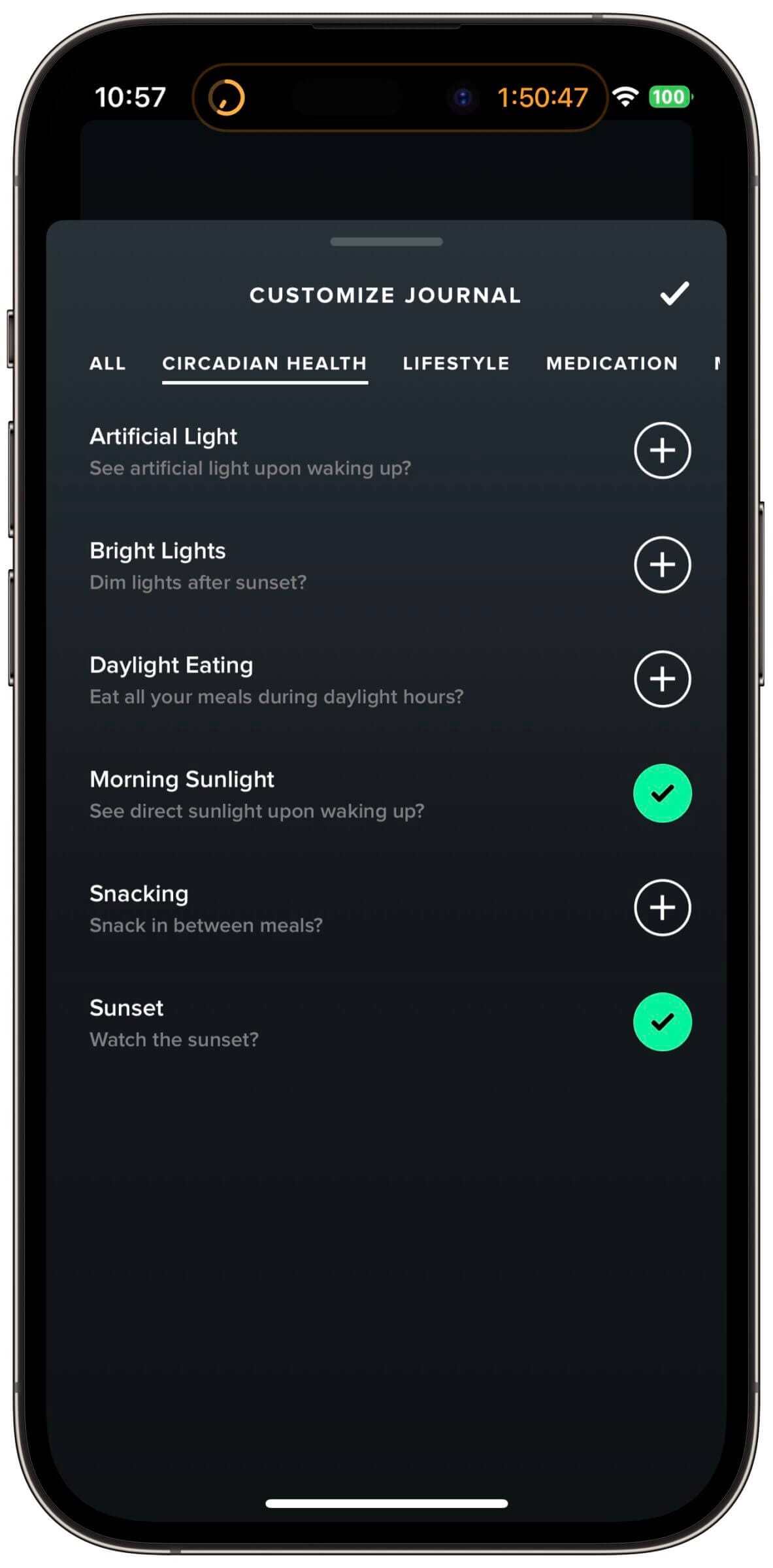
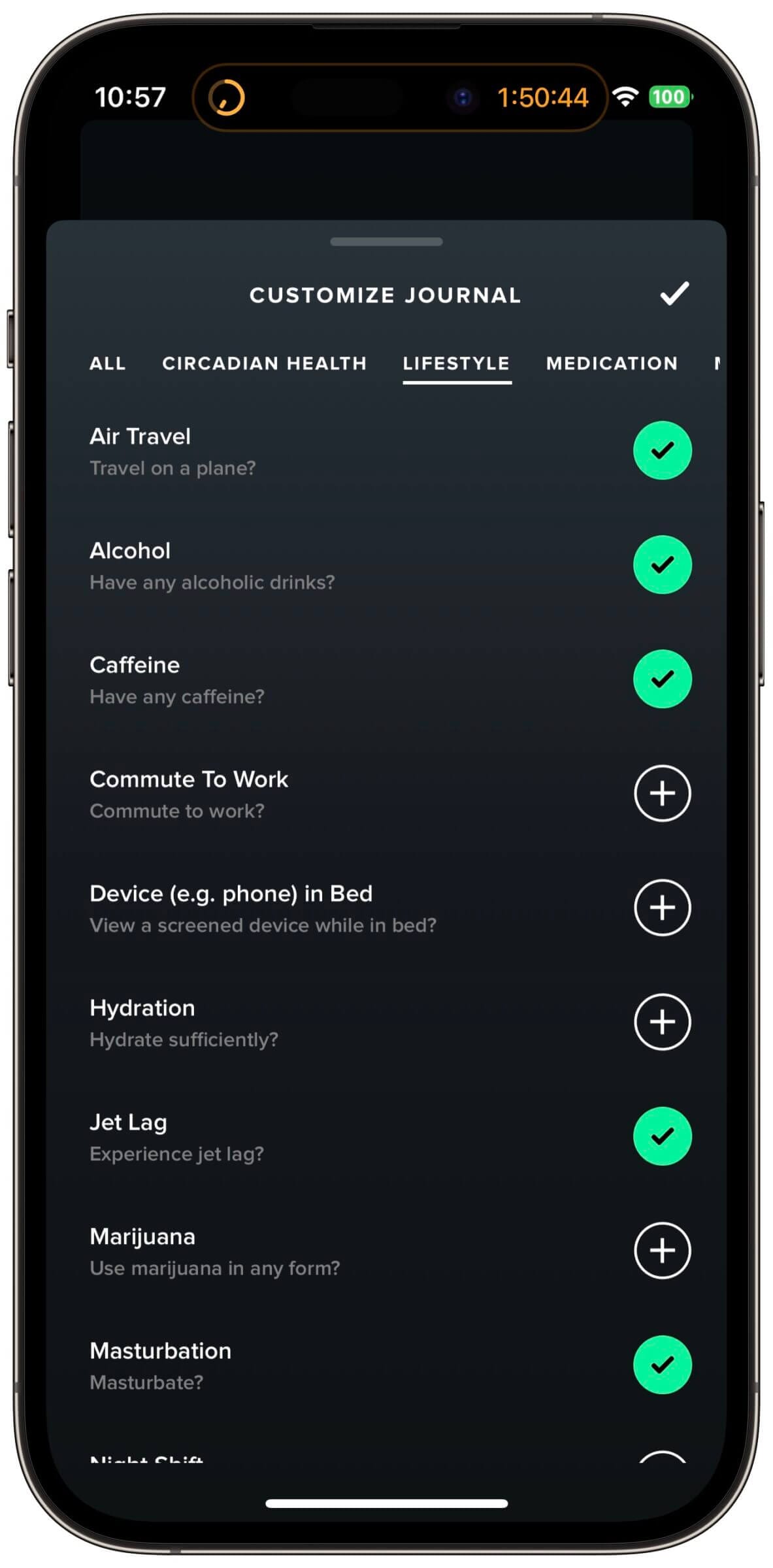
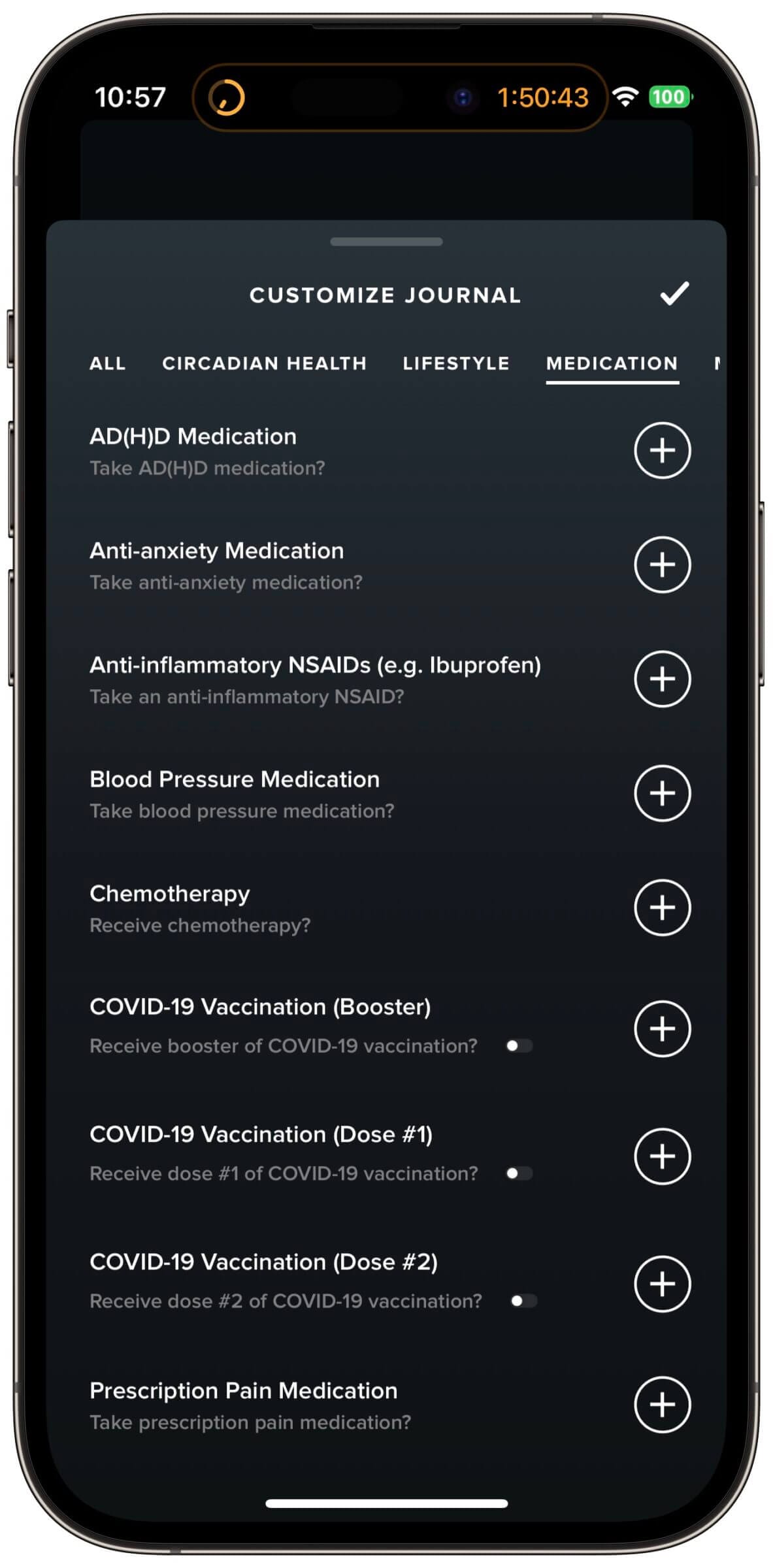
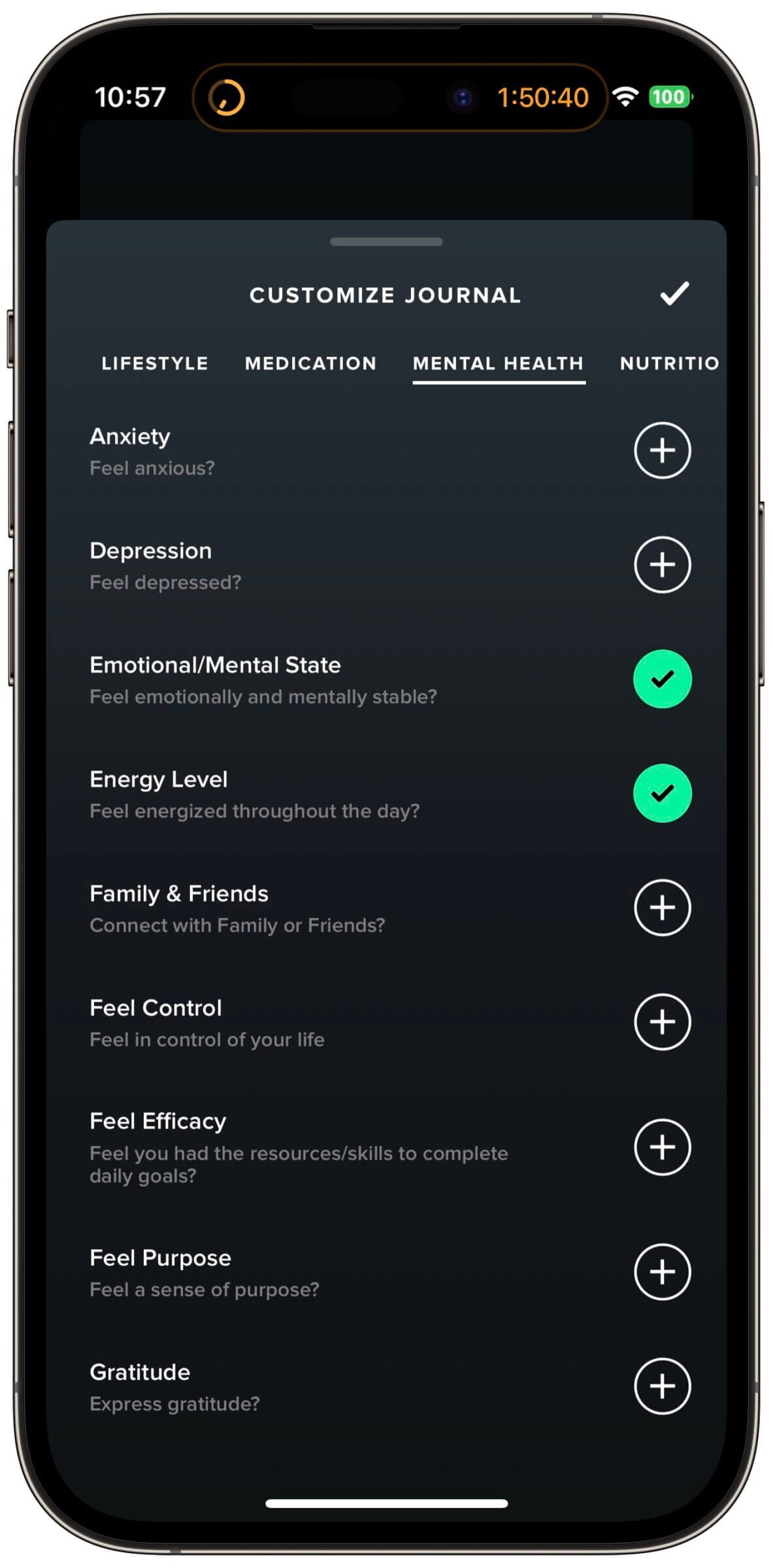
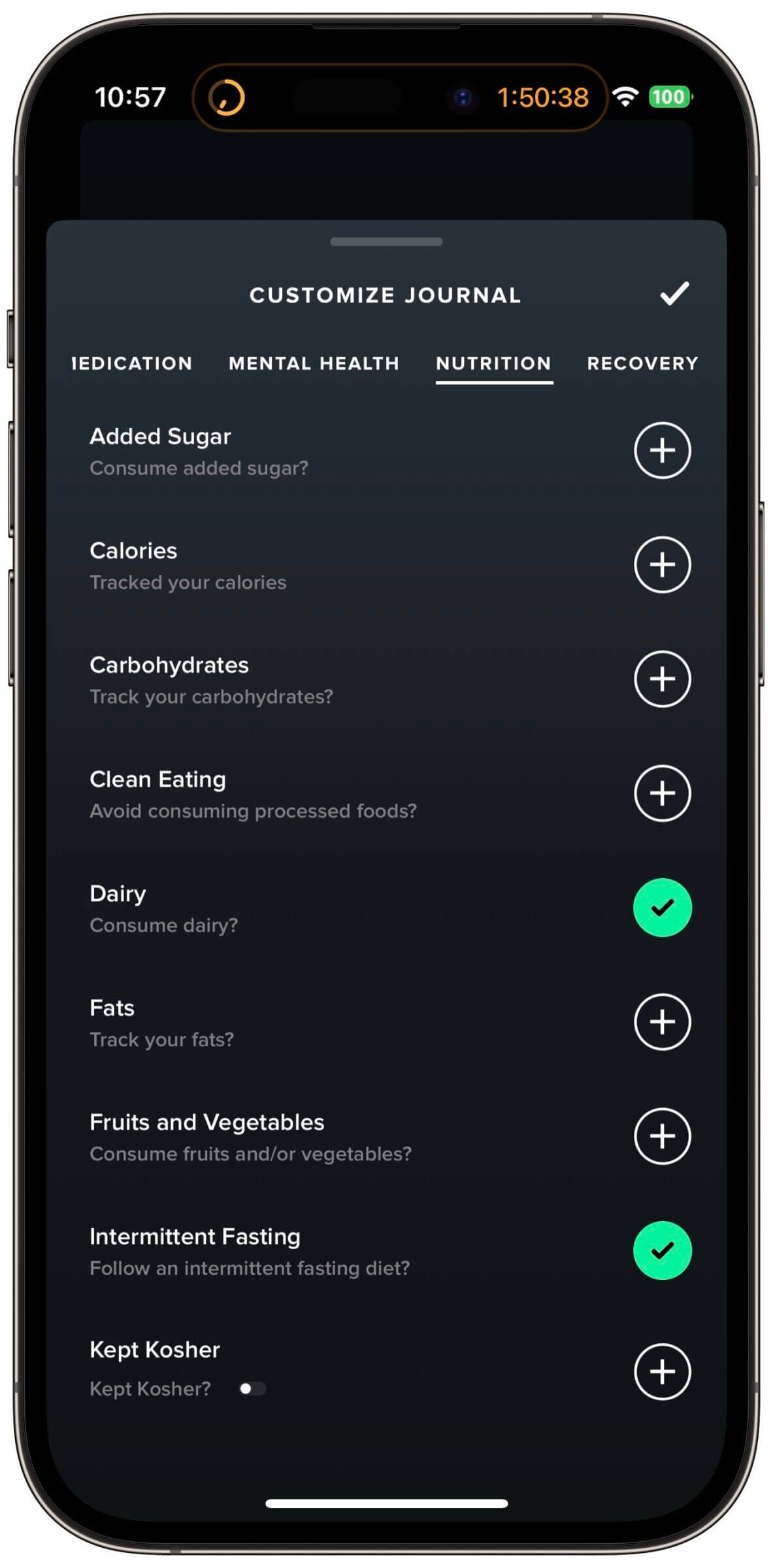
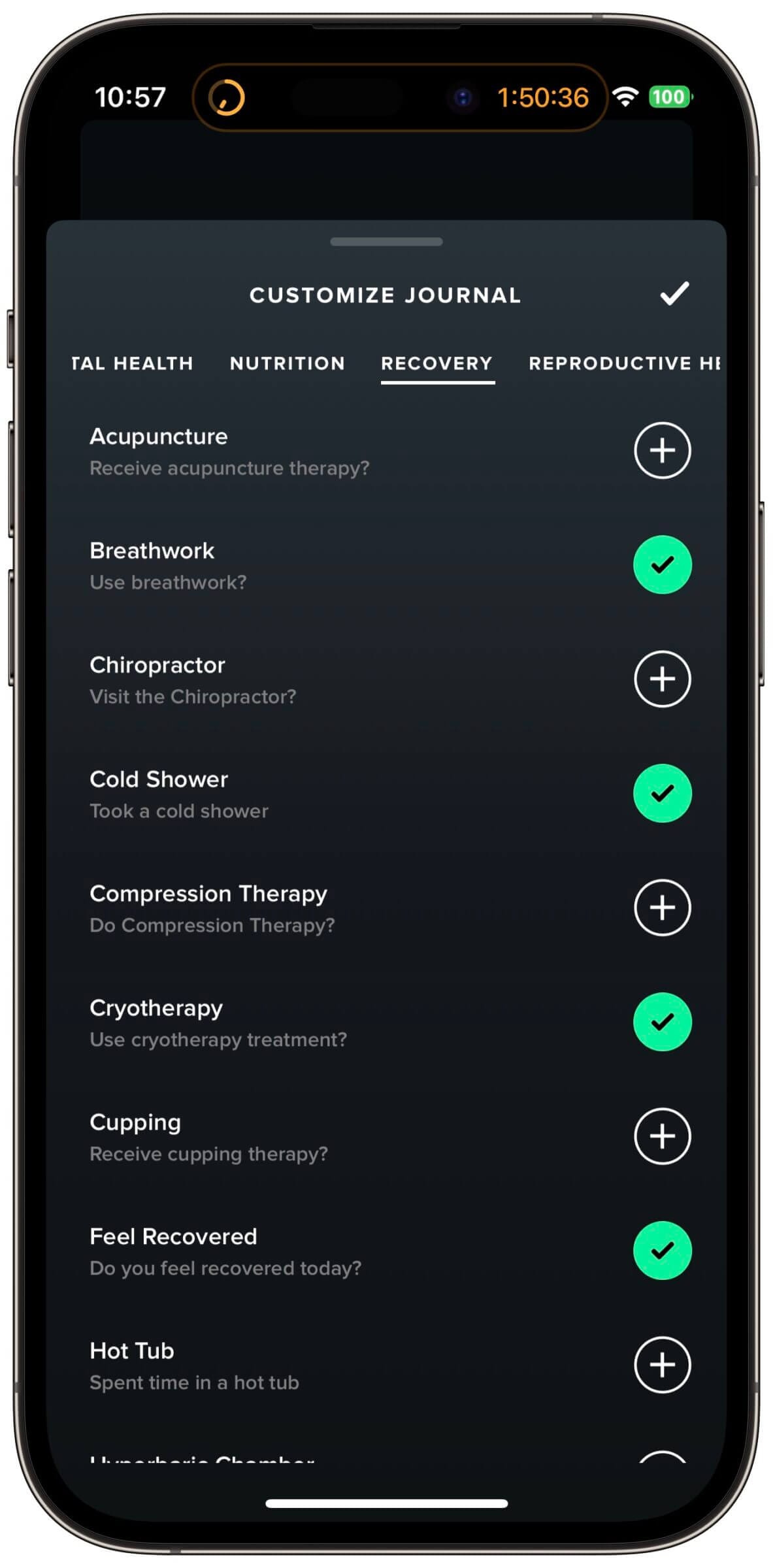
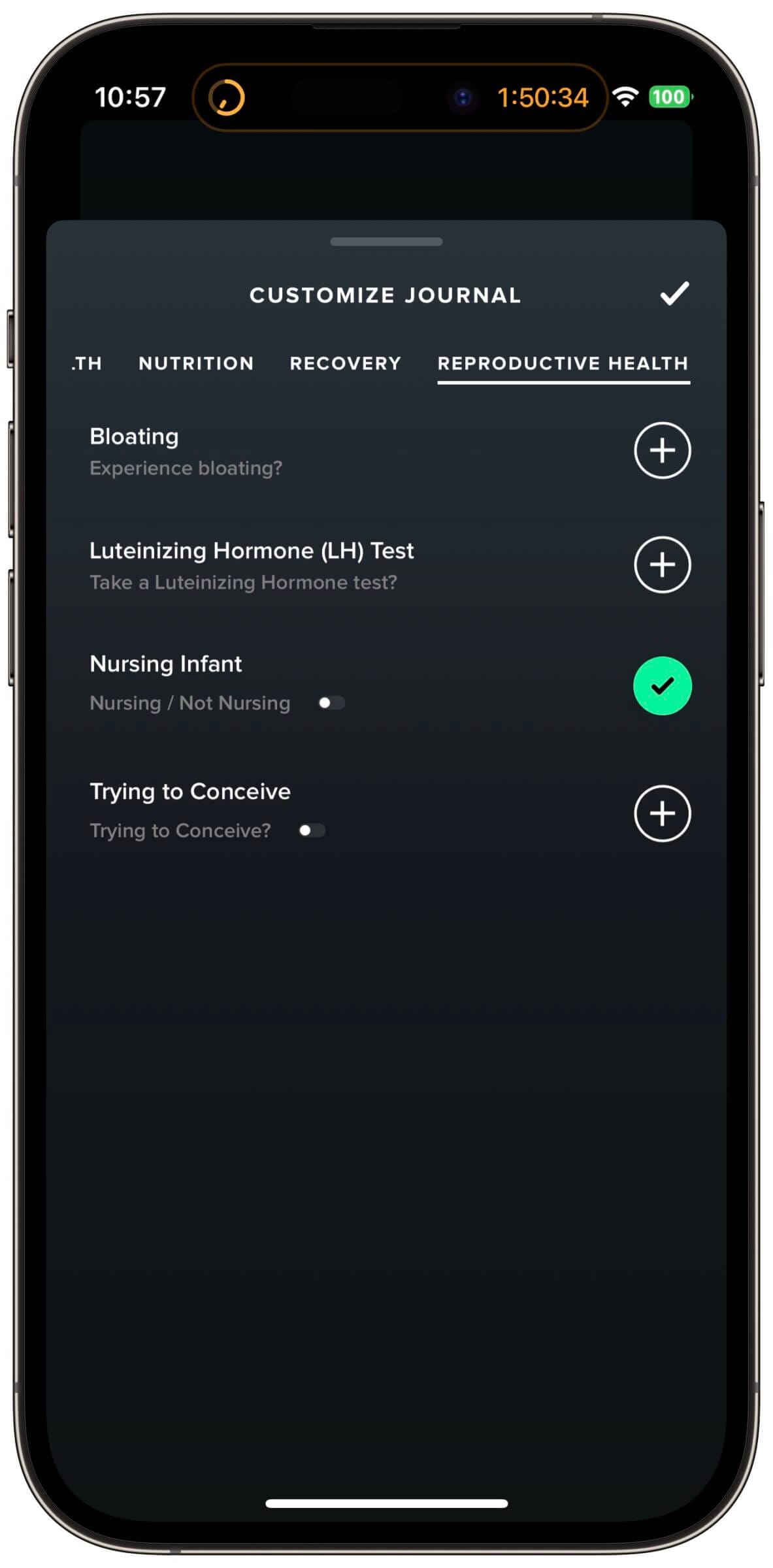
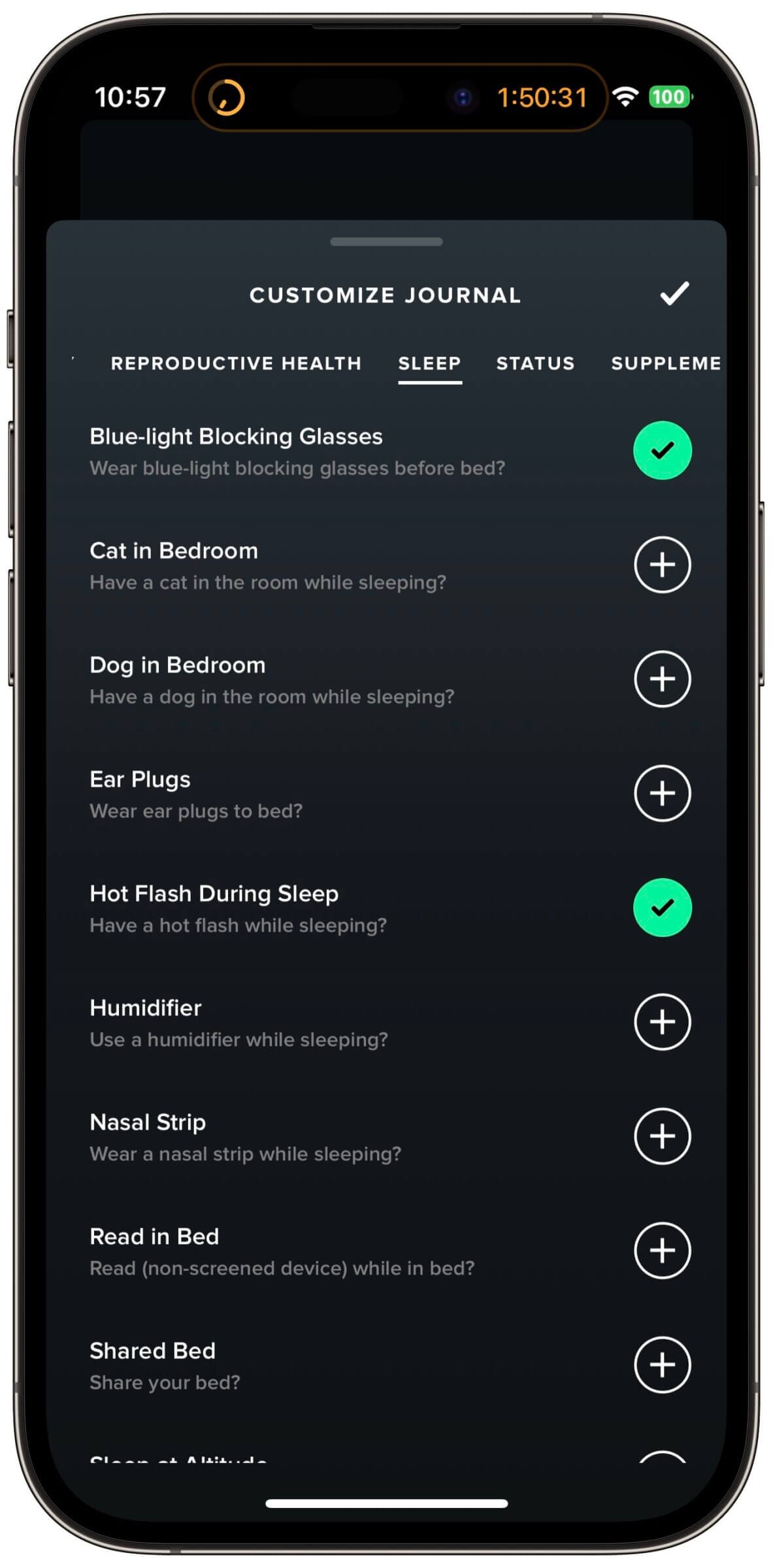
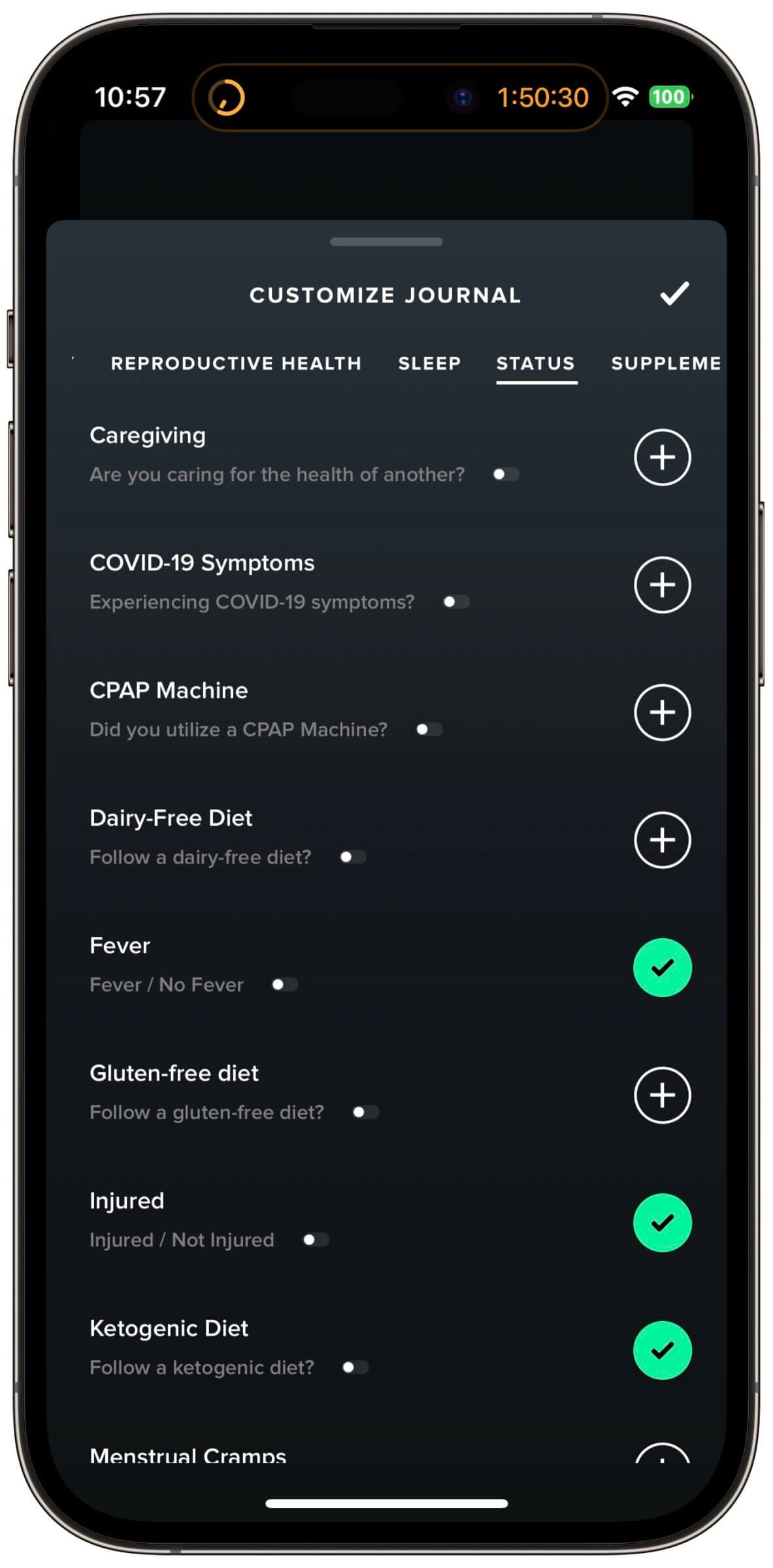
I’m sure you can imagine how at least some of these behaviors are connected to the quality of your sleep and overall performance. But others might not be so obvious, so let’s take a closer look at some of them to better understand how you can modify them for improved sleep, recovery and performance.
How I Use the WHOOP Journal

I only answer a fraction of the available behavior questions each morning, based on my specific lifestyle. The good news is that you can pre-select the ones you want the WHOOP app to ask you. That way, you don’t have to click through all 100+ questions.
The ones that I’m most interested in are:
- Alcohol/caffeine
- Time of last meal
- Magnesium/melatonin supplementation
- Stress
- Exposure to sunlight
- Melatonin
The reason why I’m so focused on these is because I can easily and directly influence them by adjusting my lifestyle.
My goal is to find out what the lowest hanging fruits are in terms of improving sleep and recovery without severely disrupting my lifestyle.
For example, knowing that exposure to early morning sunlight improves my sleep and allows me to reach 100% of my sleep needs encourages me to take the dog for a walk before 8 a.m.
On the other hand, understanding how even one glass of red wine before bedtime negatively impacts my sleep and recovery makes it easier for me to abstain from alcohol.
Frequently Asked Questions
It’s important to understand that the suggestions and recommendations you get from the WHOOP app, based on the Journal feedback you provide, reflect correlations.
Much like with nutritional studies, there’s a difference between correlation and causation. For example, when I read a book before going to sleep and my deep sleep increases by 40 minutes, it might not be caused by the book. Instead, it could well be that I’m more relaxed and exposed to less blue light. Or maybe there are other factors involved that I’m not aware of.
So while the WHOOP wearable can’t replace placebo-controlled, double-blind studies, it’s a great tool for self-experimentation that can help you make better lifestyle choices.
Yes they do! In fact, while writing this article I received an update notification indicating that WHOOP added Hydration, CPAP Machine and Sleep at Altitude to the Journal. Additionally, the company made the Intermittent Fasting behavior more useful by asking for a feeding window instead of only the time of the last meal.
When you’re not fasting, the body gets most of its energy and nutrients from the food you eat (or drink). Depending on the diet you’re on, most of that energy either comes from carbohydrates (glucose) or fat (ketones and fatty acids).
What’s important to understand is that if you’re not a professional athlete, your body can thrive on fat as its primary source of fuel. That’s the idea behind the ketogenic diet.
However, athletes who compete in certain types of exercise, such as CrossFit, might be better off running on glucose. You can learn more about the best diet to improve physical performance in this article.
The main difference between the WHOOP Journal and tags in the Oura Ring app is that the former correlates your lifestyle choices with your sleep performance, HRV and recovery score.
Oura doesn’t do any automatic correlation (yet). Instead, it’s more like a journal that leaves it up to you to draw your own conclusions.
You can learn more about the differences between the Oura Ring and the WHOOP strap in my Oura Ring review.
Where Can You Learn More?
To learn more about WHOOP, check out my in-depth Whoop review or visit whoop.com. I also recommend that you subscribe to the WHOOP podcast, hosted by Will Ahmed, and to listen to the episodes featuring Kristen Holmes and Emily Capodilupo.
Both Kristen and Emily talk a lot about the science behind WHOOP and how it can help improve human performance.
WHOOP Journal: Final Thoughts
WHOOP is by far my favorite fitness and sleep tracker, and features like the WHOOP Journal keep making this wearable even more valuable.
Some WHOOP members aren’t happy with the fact that the company charges a monthly membership fee, but by doing so, WHOOP can continue to release awesome new features like the WHOOP Journal. Case in point, my contact at WHOOP told me that they will continue releasing a new feature every month, and I can’t wait for what they have in the pipeline.
As far as the Journal is concerned, I’m more than thrilled about the ability to provide detailed feedback about my lifestyle choices every morning, and to find out how my behavior impacts my performance, recovery and sleep.
PS: If you aren’t a WHOOP member yet but would like to become one, make sure to use this link to get a free month added to your new subscription!

Michael Kummer is a healthy living enthusiast and CrossFit athlete whose goal is to help people achieve optimal health by bridging the gap between ancestral living and the demands of modern society.

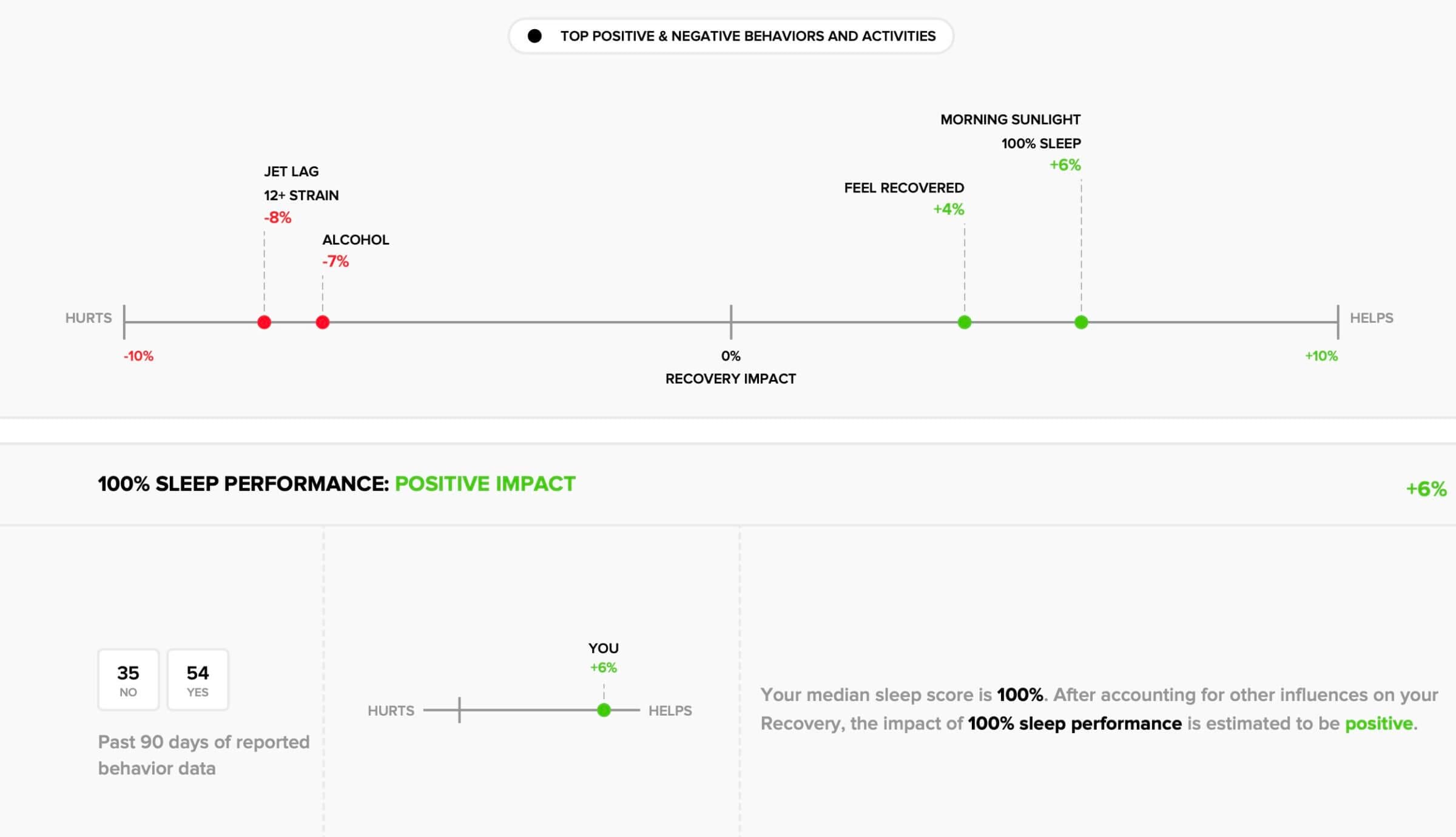

Hi Michael!
Thank you for sharing this awesome information!
I am a new WHOOP user..so far, I’m loving it. The one thing I am confused about is logging an entry in my journal. When I wake up in the morning, it pops up, “Yesterday did you…” following the prompts. I log an entry and it’s saved as the current day, not the day before as it says (“Yesterday did you…”)
Maybe I am missing something here? It is confusing a little…Hope this makes sense…I appreciate it! Thank you so much!
Hi Nat,
yeah, it is a bit confusing but you’re not missing anything. Your behavior from the day before influences today’s recovery score. Makes sense?
This is great feedback and insight. Thank you for taking the time to share this information.
I’m only two weeks in with Whoop, but enjoying the feedback. The only thing that is puzzling is Whoop tells me I’m awake from 2.5 hours to 3.25 hours per night, which obviously impacts my recovery/HRV, etc.
My wife said that this is not the case, when she was up late and whoop showed me awake (disturbances) at 2am and 2:20 and 2:40. She said I rolled over, as I sleep on either side. But I certainly don’t feel like I missed sleep on days where I’m averaging 4:45 hours of sleep. Obviously, this impacts recovery and then begins a cycle of thwarting my workouts, which I did not change. In two weeks, I have zero green recovery days and four yellow days. The rest are red.
My HRV is super low, at 25 avg, but my RHR is super good at 51 average. From what I can see, I will not show a good HRV until I recover, which will never happen unless I stop working out completely. And….I feel great (8.5 out of 10) during all of this. ??
I tried forcing myself to stay in bed for 9 hours on one day and Whoop recorded my biggest sleep day of 5:30 hours. However, I felt lethargic on that day and too rested.
Is there a way to modify sensory data, because I swap from left to right side and get punished as being awake every time that happens?
No sleep apnea problem either.
Hi Richard,
that’s odd indeed. To answer your question, I don’t think you can modify your sensor data but I’d reach out to WHOOP support and check if they’ve seen this before.
Also, how do you know you’re not suffering from sleep apnea? And how does your RHR and RPM graphs look like during those periods where WHOOP thinks you’re awake?
Cheers,
Michael